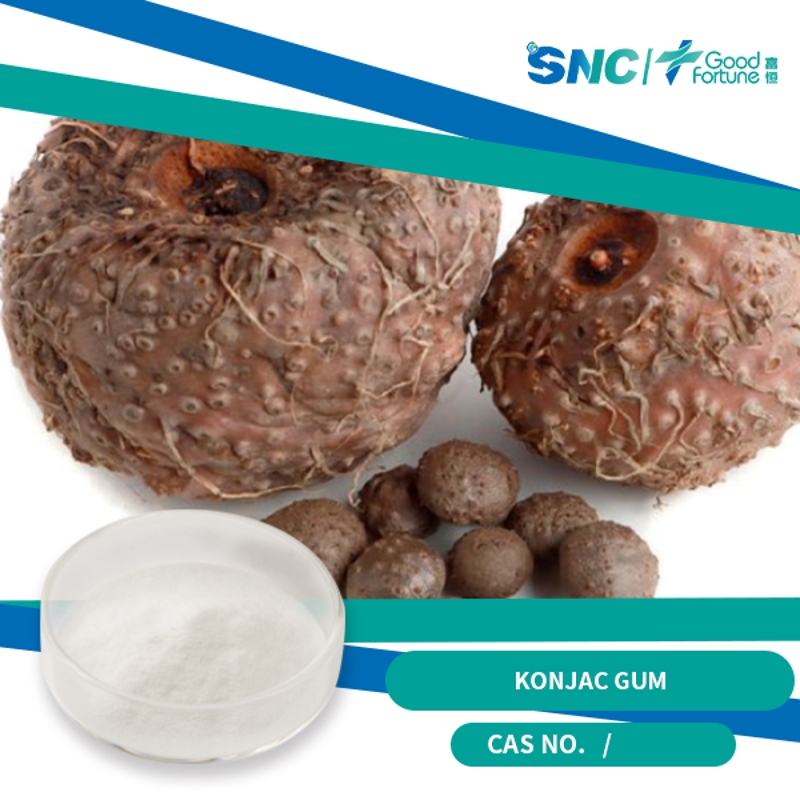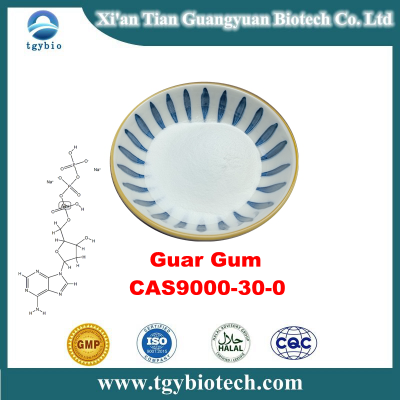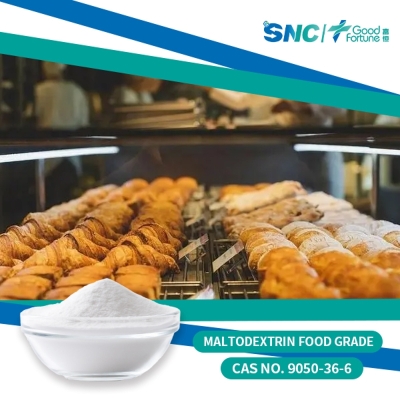-
Categories
-
Pharmaceutical Intermediates
-
Active Pharmaceutical Ingredients
-
Food Additives
- Industrial Coatings
- Agrochemicals
- Dyes and Pigments
- Surfactant
- Flavors and Fragrances
- Chemical Reagents
- Catalyst and Auxiliary
- Natural Products
- Inorganic Chemistry
-
Organic Chemistry
-
Biochemical Engineering
- Analytical Chemistry
-
Cosmetic Ingredient
- Water Treatment Chemical
-
Pharmaceutical Intermediates
Promotion
ECHEMI Mall
Wholesale
Weekly Price
Exhibition
News
-
Trade Service
Recently thickener has become the focus of media attention, from a parent found that milk drinks can be condensed into "glue", to a chef burst porridge shop porridge to add "glue", so that many people really panic for a while.Pour the milk drink on a plate, let the liquid spread into a thin layer, after the night to see, will form a soft gel, this is really nothing new, the previous two years have been fried once. In fact, many drinks have this effect. The same thing happens when you cook thick oatmeal soup with milk in your own home. It's just an interaction between milk proteins and plant glues, and the result is a soft freeze. (
2011-12-20 |
How did the latex drink become "latex")But the porridge shop also needs to be glued, which seems unheard of before, is it really terrible? Is it illegal?think of the recent fashionable saying: five words floating in the sky, this is not a thing!, at least Chinese, there seems to be an instinctive love for sticky food. For example, sticky rice sells more expensive than non-stick rice and rice, especially at dragon lunchtime, Lantern festivals such as the Lantern Festival; sticky large yellow rice and small yellow rice are made into holiday food and specialty snacks; sticky silver ear soup is favored by women as a face food; sticky soapy rice is sold as a specialty, sticky pig skin soup is also respected as beauty food ...Even if it's not so sticky, people are willing to try to stick them a little bit. For example, cooking rice porridge millet porridge porridge when added alkali, nothing but to make porridge easily become more sticky, not only porridge shop deep in this way, many people at home also enjoy it. For example, stir-fry when ticking juice, making soup when sprinkling some water starch, not all to thicken? After the ice cream freezes, the sticky glue-like soup is thickening; many drinks try to thicken it in order to add a bit of "content".who love the freezing taste are not in the minority. Among the traditional foods, meat-skin frozen, fish-skin-frozen, hawthorn-frozen, almond tofu, coconut jelly, and so on, are popular frozen foods, not to mention jelly products sold in supermarkets, as well as a variety of pudding desserts in pancake and dessert shops. There doesn't seem to be any one to pursue, what's in it?, thickeners and gels are almost two forms of a class of things. Most of the things that can be gelding can be used to thicken; For example, pig skin can be cooked into a sticky broth, which cools and turns into meat skin frozen. For example, hawthorn can be cooked into a sticky hawthorn soup, thick hawthorn Tonga a lot of sugar and put in the refrigerator, you can condense into hawthorn frozen. They play a game that is nothing more than a
-
of the gel.So-called sol, is a number of hydro-hydro long-chain molecules wandering in the water, they can attract a lot of moisture, water molecules layer by layer around them, as if the star surrounded by a large group of fans, make the scene crowded. The so-called viscosity is the resistance that arises when moving between molecules. Obviously, a star walks, and a star who surrounds a large group of fans walks, the degree of resistance is very different.Gelatin is also good, starch is good, silver ear polysaccharides are also good, cara glue, jaundala gum, gel, methyl cellulose, a variety of modified starch and other foods commonly used thickeners are also good, they can form a viscous solution in the water is exactly the same reason - they are hydro-hydro long-chain large molecules.these large molecules move freely in the water when the temperature is high, but when the temperature is low, they tend to be close to their peers. However, this proximity is blocked by many water molecules and can only be closely contacted at certain points. As a result, the big molecules form the same state as the net pocket, and the water molecules are netted in the network of the big molecules. This state is a gel with varying degrees of softness. This gel, like the chemical composition of the sol, does not produce any additional harmful substances, just as the skin of meat freezes and melts into a viscous solution.this kind of game, if you play in the kitchen at home, it would be very emotional. People also specifically buy
gelatin
, gelatin, gel powder) or agar (foreign vegetables, artisan powder, frozen powder, agar gum, swallow essence), used to make a variety of frozen desserts, feel that their cooking skills are quite high. But once it's in the market, there are a lot of people who express fear. For example, the chef broke the news, porridge in the shop to add a class of additives called "porridge treasure", which has "yellow original glue" this "industrial ingredients."Indeed, jaundol, a food additive licensed in several countries, is a glial produced by microorganisms and is added to food to show no obvious harm other than slowing digestion, which reduces blood sugar and lipid rise after meals. Even when buying foreign food, it is often found in ice cream, puddings and even salad dressings. In China, it is licensed for use in cream, syrup, raw wet pasta food (such as crust, dumpling skin), raw and dry noodle products (such as hanging noodles), fennel, fruit and vegetable juice, so it is a real food industry additives. Moreover, in the skin of dumplings, the amount of added can be as high as
1%
, in fruit and vegetable juice can be "used in the right amount according to production needs", there is no limit.I guess a lot of people will marvel and say, Ah! Originally the shop those how to pull can not break the dumpling skin, because added thickener ah! Yes, it is likely that there is more than this additive, phosphate and edible alkali can also be added, as long as there is no alum and borax, it is not illegal.would say that the scope of this license does not include porridge in the porridge shop ah! Indeed, there is a gap between the actual range of use of thickeners and the current reality. For example, most of the standards currently set by the food industry do not take into account the needs of the catering industry, created a vacuum of regulations.at home certainly doesn't need these thickeners, but it's different in the store. Guests are less likely to wait for porridge from the start, and it's too much for hungry guests to wait
50,
minutes (I've experienced it myself). However, porridge is not something that can be cooked in a pot all the time. As the cooking time lengthens, it gradually becomes thinner, the viscosity decreases, and of course it is not good to drink.this is because starch in the porridge material is packaged in the form of starch grains. After the starch grain absorbs water to the limit, and then fully heated, the starch grain will break, this time, the viscosity will rise to the maximum. Once the starch particles disintegate into pieces, the viscosity decreases. It's like saying that traffic resistance is the biggest when fans gather around the stars. Once these people are dispersed, the impact on traffic will drop rapidly.So, in order to keep the porridge in a sticky state, so that consumers when to drink all feel that the taste of porridge is good, starch alone is a bit unreliable, even if you add a small amount of edible alkali, and add a small amount of rice, the effect is not ideal, so you need to find some more viscous than starch long chain molecules. As a result, jaundols and other thickeners were invited into the porridge pot.I speculate that the so-called "porridge treasure" additives, in addition to jaundol, there must be other things that promote starch hydrophosphatization, such as edible alkali, such as phosphate and so on. There are industry sources, porridge inside the sweet taste, in fact, added sweeteners instead of sugar, some also put meat flavor and fruit flavor.is this an illegal act, or is it a normal food and beverage measure for the convenience of consumers? I'm not a regulatory expert, I can't define it. I just want to emphasize two things: First, the state should include the use of additives in the catering industry. Second, the catering industry should clearly inform consumers, food and beverage added to what additives, so that consumers clearly eat.From a consumer point of view, first of all, you don't have to be too afraid of thickeners in porridge pots, because they are safer in additives, and if you don't go to the porridge shop every day to drink porridge, it is estimated that you eat more thickeners from other foods. Secondly, eat must clearly eat, know that the outside porridge can not be cooked and drunk, do not expect it and the quality of porridge at home is completely consistent. Speaking of which, someone will certainly ask: Canned porridge with no additives? Just look at the ingredients list yourself.







